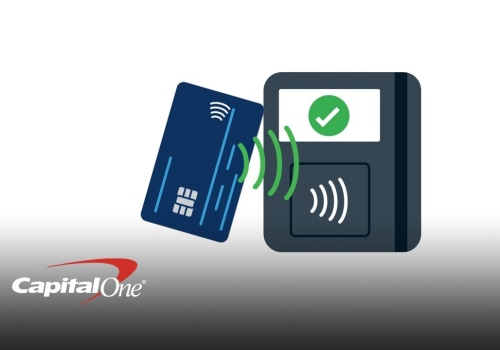Dropshipping is an increasingly popular business model for entrepreneurs and retailers alike. It offers the potential to start an online store with minimal start-up capital and low overhead costs, while still providing a wide range of products to customers. The dropshipping business model is a type of retailing where the retailer does not keep goods in stock. Instead, when a customer orders a product, the retailer purchases it from a third-party supplier who ships it directly to the customer. This eliminates the need for the retailer to hold large inventories of products, saving time, money, and storage costs. This article provides an overview of the dropshipping business model, including how it works, its benefits and drawbacks, and tips for getting started. Dropshipping is an e-commerce business model that allows entrepreneurs to create an online store without having to purchase or store any inventory.
In dropshipping, retailers partner with suppliers who store and ship products directly to customers on the retailer's behalf. This business model has become increasingly popular in recent years, as it offers entrepreneurs a low-cost way to enter the e-commerce market. When a customer places an order on a dropshipping store, the retailer forwards the order information to their supplier. The supplier then packs and ships the product directly to the customer, sending the retailer the tracking information so they can keep their customers up-to-date.
The retailer doesn't have to worry about handling or storing any inventory, so they can focus on growing their business. Dropshipping comes with several advantages. For starters, it requires very little upfront investment, as there are no costs associated with purchasing and storing inventory. This makes it an attractive option for entrepreneurs who are just starting out.
Additionally, dropshipping stores don't need to worry about shipping and fulfillment, as these tasks are handled by the supplier. Finally, dropshipping allows businesses to expand quickly, as they can offer a wide range of products without having to invest in physical inventory. There are also some drawbacks to dropshipping. For example, retailers don't have any control over quality control or customer service issues that arise from shipping and fulfillment.
Additionally, retailers may experience delays in fulfilling orders due to the supplier's turnaround time. Finally, dropshipping can be a competitive business, as many other entrepreneurs are taking advantage of this business model. Fortunately, there are several steps entrepreneurs can take to make sure their dropshipping business is successful. First, it's important to choose the right products.
Researching current trends and customer needs can help you determine which products are most likely to sell well. It's also important to find reliable suppliers who offer competitive prices and quality products. Finally, it's essential to develop a comprehensive marketing strategy that includes SEO, social media, and advertising to reach your target audience and boost sales. There are many successful dropshipping businesses out there that serve as great examples for entrepreneurs looking to get started. One such example is Dollar Shave Club, which started out as a small e-commerce store selling subscription razors and has now grown into a multi-million dollar company with over 4 million subscribers.
Another example is Warby Parker, an online eyewear store that has revolutionized the eyewear industry by offering high-quality eyewear at affordable prices. In conclusion, dropshipping is a popular business model that can help entrepreneurs start an online store with minimal upfront costs and no need for physical inventory. However, it's important for entrepreneurs to do their research before getting started and find reliable suppliers who offer competitive prices and quality products. Additionally, developing a comprehensive marketing strategy is essential for reaching customers and boosting sales.
Tips for Setting Up a Successful Dropshipping Business
Starting a successful dropshipping business requires careful planning and execution.Here are some tips to help you get started:Choose the Right Products:Choosing the right products is essential for running a successful dropshipping business. Select items that are in demand and that can be sold at a competitive price. Research the market and trends to find items that will bring you the most profit. Consider factors such as customer reviews, shipping costs, and product availability.
Find Reliable Suppliers:
Finding reliable suppliers is essential for dropshipping businesses.Look for suppliers with a good reputation, competitive pricing, and fast shipping times. Make sure they have a good return policy and customer service. It’s also important to ensure that they can provide enough stock to meet your customer’s needs.
Marketing Your Business:
Marketing is key to the success of any ecommerce business. Develop a strategy to reach your target audience and promote your products.Consider using social media, influencer marketing, email campaigns, and other tactics to spread the word about your business.
What is Dropshipping?
Dropshipping is a business model in which an online store owner does not purchase or store any inventory. Instead, the store owner partners with a third-party supplier who stores and ships the product directly to the customer. This means that the store owner can offer a wide variety of products without having to manage or store any inventory. The store owner sets the prices for their products, but the supplier determines the cost of shipping and handling for each order. The store owner earns a profit from the difference between the price they charge and the cost of shipping and handling.This model helps keep overhead costs low, which allows store owners to focus on marketing and growing their business. For example, an online store specializing in pet supplies could partner with a pet food supplier. The pet food supplier would handle all orders from the pet store, as well as shipping and handling fees. The pet store owner only pays for the products they sell and keeps the difference in profits. Dropshipping has become increasingly popular among ecommerce entrepreneurs due to its low risk and scalability. With dropshipping, entrepreneurs don’t need to worry about purchasing or storing inventory, or managing shipping and handling.
This makes it easier for entrepreneurs to focus on marketing and growing their business. In order to make a successful dropshipping business, entrepreneurs need to choose reliable suppliers, create an efficient system for order fulfillment, and develop effective marketing strategies. Additionally, entrepreneurs should ensure that they are using secure payment methods and keeping up-to-date with any changes in regulations related to their industry.
Advantages and Disadvantages of Dropshipping
Dropshipping is an increasingly popular business model for entrepreneurs who want to create an online store without having to purchase or store any inventory. It has several advantages, such as low overhead costs and lack of need to invest in a physical store. However, it also has some disadvantages, such as lack of control over product quality and difficulty in controlling shipping times. One of the main advantages of dropshipping is the low overhead costs associated with it.Unlike traditional retail stores, there is no need to invest in a physical store, rent space, or hire employees. All that is needed to start a dropshipping business is a website and access to a supplier. This makes it ideal for entrepreneurs who are just starting out. However, there are some drawbacks to dropshipping. One of the main disadvantages is the lack of control over product quality.
Since the supplier is responsible for shipping the products directly to the customer, entrepreneurs have no way of ensuring that the products are up to their standards. This could lead to dissatisfied customers and negative reviews. Another disadvantage of dropshipping is difficulty in controlling shipping times. The supplier is responsible for shipping the products, so entrepreneurs have no way of making sure that they arrive on time. This can be especially problematic if there are any delays on the part of the supplier, which could leave customers waiting longer than expected. Despite these drawbacks, dropshipping can be a profitable business model for entrepreneurs.
By understanding its advantages and disadvantages, entrepreneurs can make sure that their dropshipping business is successful. In conclusion, dropshipping is an attractive business model that offers entrepreneurs the opportunity to build an online store without having to purchase or store inventory. Despite its advantages, dropshipping has some drawbacks that need to be taken into consideration. With the right strategy and planning, however, entrepreneurs can set up a successful dropshipping business that will generate revenue for years to come.







